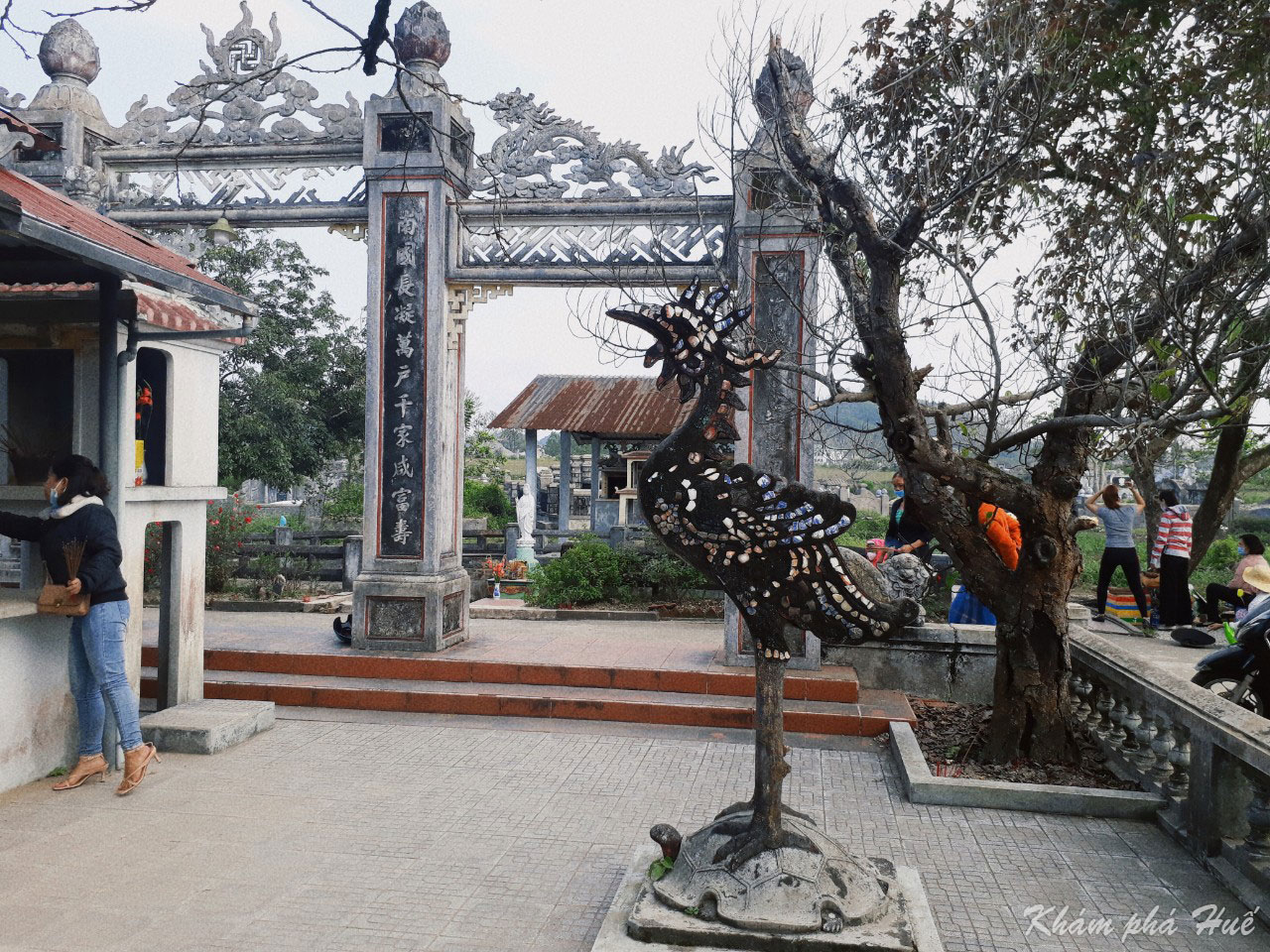With its simple architecture, the Ba Đồn Pagoda and Cemetery Historical Site exudes a tranquil and solemn atmosphere, extending along the path from the main gate, which has now been paved with concrete.
The pagoda gate consists of two main pillars, with a smaller auxiliary pillar on the left, about two meters high, supporting the name board of Ba Đồn Pagoda. The two main pillars bear a pair of Chinese couplets.
Translated by Nguyễn Quan Hà:
In battles, how many can return? Sacred traces remain for a thousand autumns on this land.
Near or far, all are known. One heart incense stick, whom do you question?
The Ba Đồn Pagoda and Cemetery Historical Site comprises three large cemeteries and five smaller ones. In the expansive areas of the three large cemeteries, there are tombstones, each inscribed with the phrase “Ân Tứ Hiệp Tán Vô Tư Chi Mộ,” meaning “King bestows collective burial for the ownerless graves.” During the burial process, the king ordered the graves to be built with surrounding walls to prevent the remains from being lost. Therefore, from the main gate to the central hall, one only sees a flat stretch of land, but beneath the green grass lies the largest mass grave in the country.

The inner sanctuary is constructed in the style of five bays with two annexes. The central bay houses the Buddha altar, with a high statue of Shakyamuni Buddha and a horizontal board with four characters: Từ Bi Vô Lượng (Infinite Compassion). Below the Buddha statue is a statue of the Jade Emperor, with Nam Tào on the right and Bắc Đẩu on the left. Behind the Buddha altar is the altar for the Council of Ministers, with the inscription: Hàn Lâm Pháp Hội. The adjoining bays on the right are dedicated to the spirits of heroic martyrs, wandering souls, and the local pagoda spirits. The adjoining bays on the left are dedicated to male and female deceased, stillborn spirits, and the spirits of the local guild associations.
In front of the main hall, there is an altar dedicated to Ksitigarbha Bodhisattva and Tiêu Diện Đạo Sĩ. The architectural details of these structures feature familiar motifs often seen in temples, pagodas, and shrines throughout Huế, such as cranes standing on turtles, two dragons flanking the moon, lotuses, elephants, and tigers. These elements are crafted in relief using cement combined with ceramic and porcelain art.
Having existed for over 200 years, the Ba Đồn Pagoda and Cemetery Historical Site is the final resting place for tens of thousands of souls, many of whom are unknown, as the site has undergone numerous large-scale consolidations. As a result, Ba Đồn Pagoda is considered the location of the largest mass grave in Vietnam. The pagoda's reputation for being highly sacred stems from the many unclaimed graves it houses. This sacredness is further amplified by the numerous mystical stories surrounding Ba Đồn Pagoda, which, whether true or not, contribute to its aura as a spiritual site. These tales attract locals and visitors alike, who come to seek blessings and good fortune.
When visiting Huế, don't forget to stop by Ba Đồn Pagoda